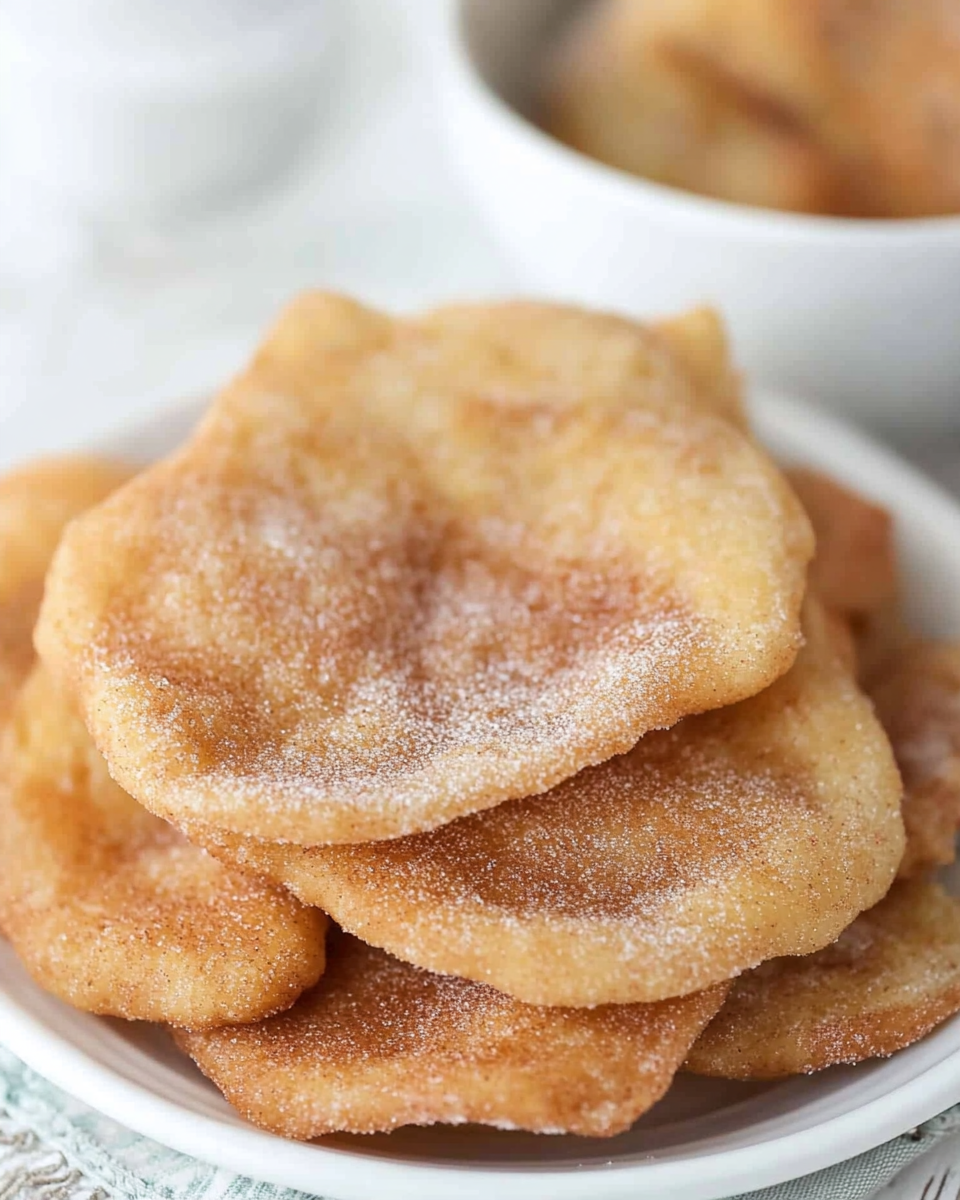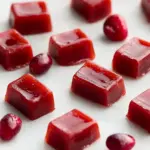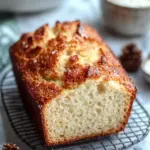Warm, sweet, and golden brown, Elephant Ears are one of those classic desserts that instantly transport you back to a fun day at the fair. Made with just a few pantry staples, these easy fried pastries puff up beautifully and are generously coated in cinnamon sugar. They’re crisp on the outside, soft on the inside, and absolutely irresistible. Perfect for whipping up in a pinch, these Elephant Ears are a fantastic treat for family gatherings, afternoon snacks, or weekend indulgences. Whether you’re serving them fresh from the pan or adding a drizzle of honey or chocolate syrup, they bring a delightful taste of nostalgia right to your kitchen – no carnival ticket required.
Full Recipe:
Ingredients:
-
1 can refrigerated biscuit dough
-
1/4 cup granulated sugar
-
1 teaspoon ground cinnamon
-
Vegetable oil, for frying
Directions:
-
In a small bowl, mix together the sugar and cinnamon. Set aside.
-
Separate the biscuit dough and flatten each biscuit into a thin, round shape using your hands or a rolling pin.
-
In a deep skillet or frying pan, heat about 1 inch of vegetable oil over medium heat until hot.
-
Carefully place one or two flattened biscuits into the hot oil.
-
Fry for about 1 minute on each side or until golden brown and puffy.
-
Remove from oil using tongs and place on a plate lined with paper towels to drain excess oil.
-
Immediately sprinkle or dip both sides in the cinnamon sugar mixture while warm.
-
Repeat until all the biscuits are fried and coated.
Prep Time: 5 minutes | Cooking Time: 10 minutes | Total Time: 15 minutes
Kcal: 210 kcal | Servings: 8 servings
Everything You Need to Know About Homemade Elephant Ears
Elephant Ears are a beloved sweet treat that has stood the test of time, often evoking cherished memories of state fairs, carnivals, and community festivals. These flat, fried dough pastries are simple to make, yet incredibly satisfying light, crispy, and finished with a generous dusting of cinnamon sugar. While the name might raise eyebrows among those unfamiliar with the dessert, it’s affectionately derived from the shape of the dough, which resembles the large floppy ears of an elephant once fried. In this article, we’ll explore the origins, cultural significance, variations, and tips for making this nostalgic treat at home.
A Bit of History: Where Did Elephant Ears Come From?
The tradition of frying dough has been around for centuries across many cultures. From Native American fry bread to Middle Eastern zalabiya and Italian zeppole, the concept of turning simple dough into a crisp, golden delicacy is nearly universal. The specific version known as Elephant Ears is widely associated with American fairs and carnivals, where it became popular during the 20th century.
The dessert is inspired by “funnel cakes” and other fairground favorites, but its dough is typically flatter and doesn’t require a special funnel or batter consistency. It’s quick, easy, and cheap to make traits that made it a favorite among vendors and home cooks alike. While the name “Elephant Ear” stuck in the U.S., similar variations exist worldwide under different names and forms.
Why This Recipe Works
One of the most appealing aspects of Elephant Ears is their simplicity. The version we’re focusing on uses refrigerated biscuit dough, which makes it incredibly accessible for busy home bakers. This shortcut saves time on mixing and proofing while still delivering a fluffy, golden result once fried.
By flattening each dough round and frying it in hot oil, you get a satisfyingly crisp exterior while retaining a soft and chewy interior. The moment the pastries are removed from the oil, they’re coated in a classic cinnamon sugar mixture creating a perfect balance of sweet and spicy with every bite. This combination of textures and flavors is what makes the recipe irresistible to both kids and adults.
When to Serve Elephant Ears
Elephant Ears are extremely versatile and can be enjoyed in a variety of settings. Here are a few occasions where this treat will shine:
-
Fairs and Carnivals at Home: Recreate the magic of the county fair in your backyard or kitchen with this simple recipe.
-
Birthday Parties: Kids love watching the dough puff up and transform into crispy, sugary rounds.
-
Movie Nights: Skip the popcorn and serve warm Elephant Ears with a drizzle of chocolate or caramel.
-
Holiday Brunches: Add them to a dessert spread alongside donuts and coffee cakes.
-
Sleepovers and Game Nights: Quick to make and easy to share, these treats are always a hit.
The speed of preparation makes them an ideal last-minute dessert option when you want something impressive but low-effort.
Flavor Variations to Try
While the classic cinnamon sugar combo is iconic, Elephant Ears are also a perfect blank canvas for culinary creativity. Here are some fun and delicious variations you can try:
-
Chocolate Drizzle: Top with melted chocolate or Nutella for extra indulgence.
-
Fruit Toppings: Add sliced strawberries, bananas, or berries with a dollop of whipped cream.
-
Savory Twist: Omit the sugar and cinnamon, brush with garlic butter, and sprinkle with parmesan for a savory snack.
-
Maple Glaze: Mix powdered sugar with maple syrup and drizzle over the fried dough.
-
Churro Style: Add a touch of nutmeg and vanilla sugar for a churro-inspired flavor profile.
These variations can turn a simple snack into a customizable dessert that suits any palate or occasion.
Tips for the Best Results
Even though the recipe is beginner-friendly, a few helpful tips can ensure you achieve the best texture and flavor every time:
-
Flatten the Dough Evenly: Consistent thickness prevents overcooking or undercooking.
-
Watch the Oil Temperature: Too hot, and the dough will burn before it cooks through; too cool, and it will soak up oil and become greasy.
-
Use Fresh Oil: Reused oil can impart off-flavors to the dough and affect crispiness.
-
Drain Excess Oil: Use paper towels or a wire rack to let the fried dough rest and release excess oil before sugaring.
-
Sugar While Hot: The cinnamon sugar adheres best when the Elephant Ears are warm right out of the oil.
Following these small but crucial steps can make the difference between an average treat and an unforgettable one.
Elephant Ears vs. Funnel Cake: What’s the Difference?
While often confused, Elephant Ears and funnel cakes are distinct in several ways:
-
Texture: Funnel cakes are more airy and lacy, with a crunchy exterior and soft interior. Elephant Ears are flatter and denser, yet still soft on the inside.
-
Preparation: Funnel cakes use a batter poured through a funnel into hot oil. Elephant Ears use dough that’s rolled or pressed into rounds.
-
Toppings: Both are usually topped with powdered sugar or cinnamon sugar, though funnel cakes more often get elaborate toppings like ice cream, fruit, and sauces.
Understanding this difference helps you appreciate Elephant Ears for their unique simplicity and charm.
Making It Your Own: Family Fun in the Kitchen
One of the best parts about making Elephant Ears is that it can become a fun, interactive activity for families. Kids can help flatten the dough and mix the sugar and cinnamon. Older kids can even help carefully coat the fried dough with sugar. It’s a great way to introduce them to cooking and create shared memories in the kitchen.
Because the ingredients are minimal and easy to find, it’s also a fantastic starter recipe for beginner cooks or anyone who wants a quick and rewarding culinary project.
Storage and Reheating
If you have leftovers (though that’s rare!), store them in an airtight container at room temperature for up to 2 days. To reheat, simply pop them in a toaster oven or standard oven at 300°F (150°C) for 5–7 minutes to bring back the crispiness. Avoid microwaving, as this can make them rubbery or soggy.
You can also freeze the fried Elephant Ears before coating them in sugar. When ready to serve, thaw and reheat in the oven, then coat with freshly mixed cinnamon sugar for that just-made taste.
Conclusion:
Elephant Ears are more than just a dessert they’re a nostalgic bite of childhood, a throwback to carefree summer days, and a celebration of simple pleasures. With minimal ingredients and maximum flavor, they’re an easy go-to recipe for any home cook, whether you’re new to the kitchen or a seasoned pro.
This version, made using biscuit dough, makes things even easier without compromising on taste or texture. You get that irresistible combination of crunch and chew, sweetness and spice, in every bite.






